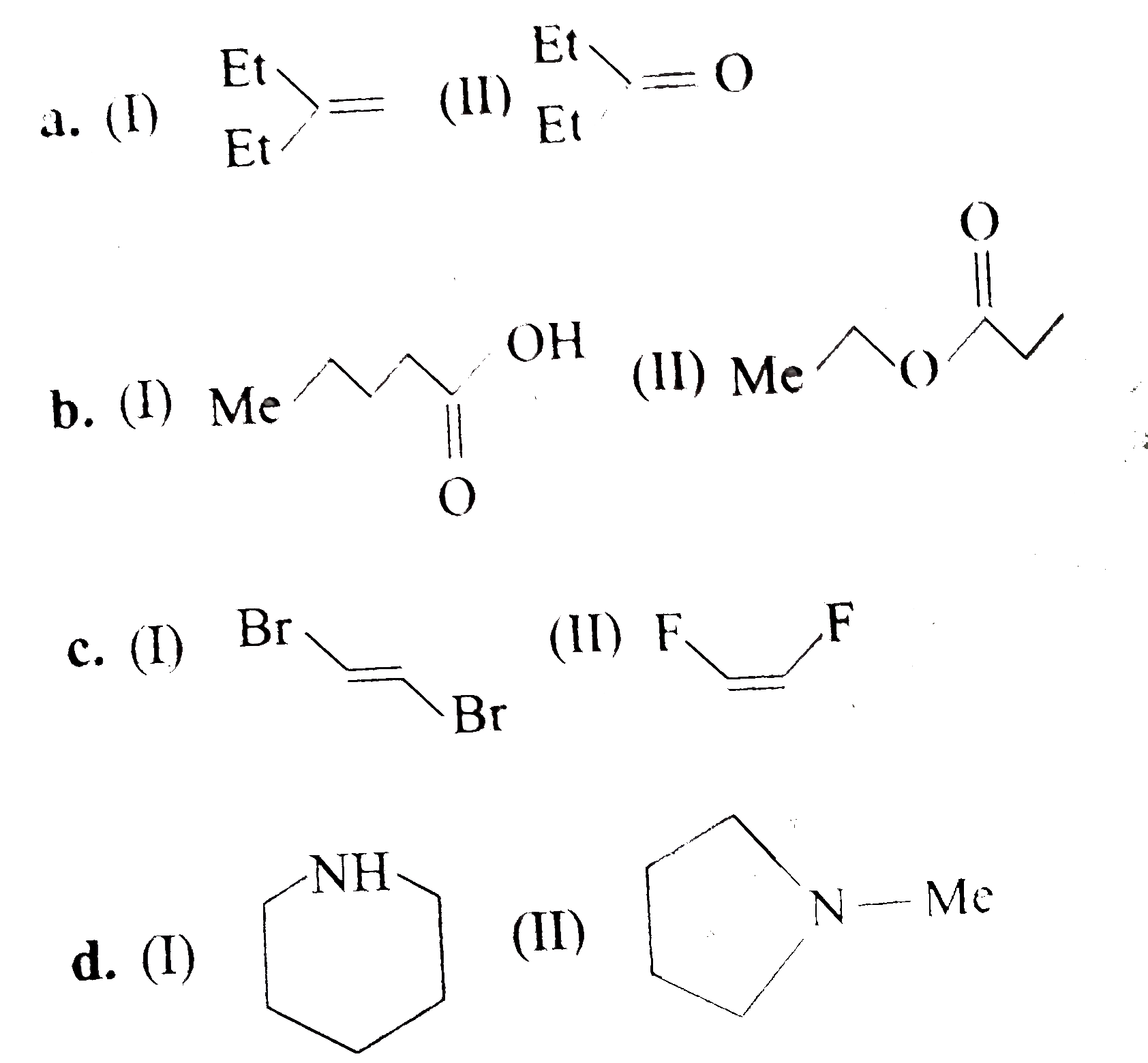Which of the following pairs would have a larger size? Explain.
KorK+
To determine which of the two species, K (potassium atom) or K⁺ (potassium ion), has a larger size, we can analyze the concepts of atomic size and effective nuclear charge. Here’s a step-by-step solution:
Step 1: Understand Atomic Size
Atomic size refers to the distance from the nucleus to the outermost shell of electrons. The size of an atom can be influenced by the number of electrons and the effective nuclear charge (the net positive charge experienced by electrons in the outer shell).
Hint: Remember that atomic size is influenced by both the number of electrons and the effective nuclear charge.
Step 2: Compare K and K⁺
- K (Potassium Atom): Potassium has 19 protons and 19 electrons. The electron configuration is (Ar) 4s¹, meaning it has one electron in the outermost shell (4s).
- K⁺ (Potassium Ion): When potassium loses one electron to form K⁺, it has 19 protons and only 18 electrons. The electron configuration becomes (Ar), meaning it now has a full outer shell (3p).
Hint: Consider how the loss of an electron affects the electron configuration and the number of electrons in the outer shell.
Step 3: Analyze Effective Nuclear Charge
When K loses an electron to become K⁺, the number of protons (19) remains the same, but the number of electrons decreases to 18. This results in a higher effective nuclear charge acting on the remaining electrons because there are fewer electrons to shield the nucleus.
Hint: Recall that a higher effective nuclear charge pulls electrons closer to the nucleus, reducing the atomic size.
Step 4: Conclusion
Since K has more electrons (19) than K⁺ (18), and the effective nuclear charge is greater for K⁺, the outermost electrons in K⁺ experience a stronger attraction to the nucleus. Therefore, K will have a larger size than K⁺.
Final Answer: K (potassium atom) has a larger size than K⁺ (potassium ion).
Atomic size refers to the distance from the nucleus to the outermost shell of electrons. The size of an atom can be influenced by the number of electrons and the effective nuclear charge (the net positive charge experienced by electrons in the outer shell).
- K (Potassium Atom): Potassium has 19 protons and 19 electrons. The electron configuration is (Ar) 4s¹, meaning it has one electron in the outermost shell (4s).
- K⁺ (Potassium Ion): When potassium loses one electron to form K⁺, it has 19 protons and only 18 electrons. The electron configuration becomes (Ar), meaning it now has a full outer shell (3p).
When K loses an electron to become K⁺, the number of protons (19) remains the same, but the number of electrons decreases to 18. This results in a higher effective nuclear charge acting on the remaining electrons because there are fewer electrons to shield the nucleus.
Since K has more electrons (19) than K⁺ (18), and the effective nuclear charge is greater for K⁺, the outermost electrons in K⁺ experience a stronger attraction to the nucleus. Therefore, K will have a larger size than K⁺.
Topper's Solved these Questions
- BOOK - ICSECHAPTER - CLASSIFICATION OF ELEMENTS AND PERIODICITY IN PROPERTIESEXERCISE - REVIEW EXERCISES29videos
CLASSIFICATION OF ELEMENTS AND PERIODICITY IN PROPERTIES
- BOOK - ICSECHAPTER - CLASSIFICATION OF ELEMENTS AND PERIODICITY IN PROPERTIESEXERCISE - VERY SHORT ANSWER TYPE QUESTIONS25videos
CLASSIFICATION OF ELEMENTS AND PERIODICITY IN PROPERTIES
- BOOK - ICSECHAPTER - CHEMICAL THERMODYNAMICS EXERCISE - NCERT TEXT-BOOK. EXERCISES22videos
CHEMICAL THERMODYNAMICS
- BOOK - ICSECHAPTER - ENVIRONMENTAL CHEMISTRY EXERCISE - NCERT TEXT-BOOK EXERCISE20videos
ENVIRONMENTAL CHEMISTRY
Similar Questions
Which of the following pairs would have a larger size? Explain.
P or AsView SolutionWhich of the following pairs would have a larger size? Explain.
BrorBr−View SolutionWhich of the following pairs would have a larger size? Explain.
Li+ or Na+View SolutionWhich of the following pairs would have a larger size? Explain.
O2− or F−View SolutionWhich of the following pairs would have a larger size? Explain.
Na+ or Mg2+View SolutionWhich of the following pairs would have a smaller size. Explain.
(a) Na⊕orMg2+ , (b) O2−orFɵ
(c ) PorAsView SolutionWhich of the following pairs would have higher boiling points ?
 View Solution
View SolutionWhich of the following pairs have the same dimensions?
View SolutionWhich of the following pairs have the same dimensions?
View SolutionWhich of the following pair have a double function?
View Solution

